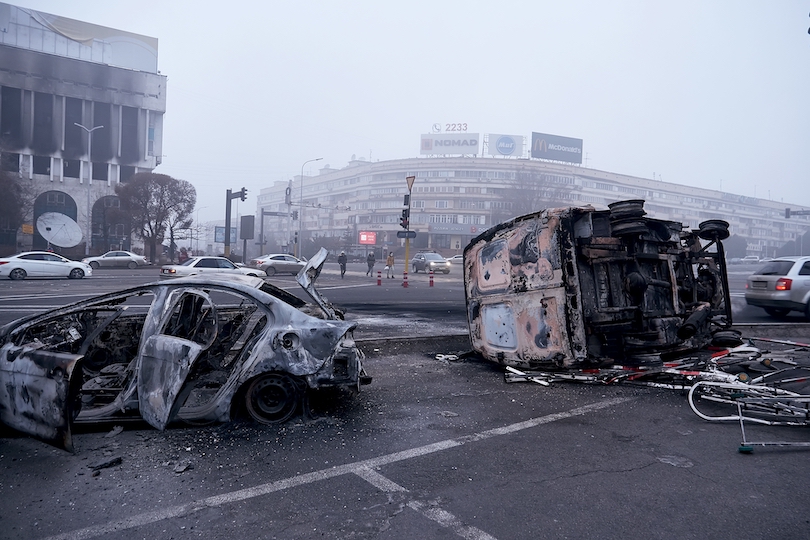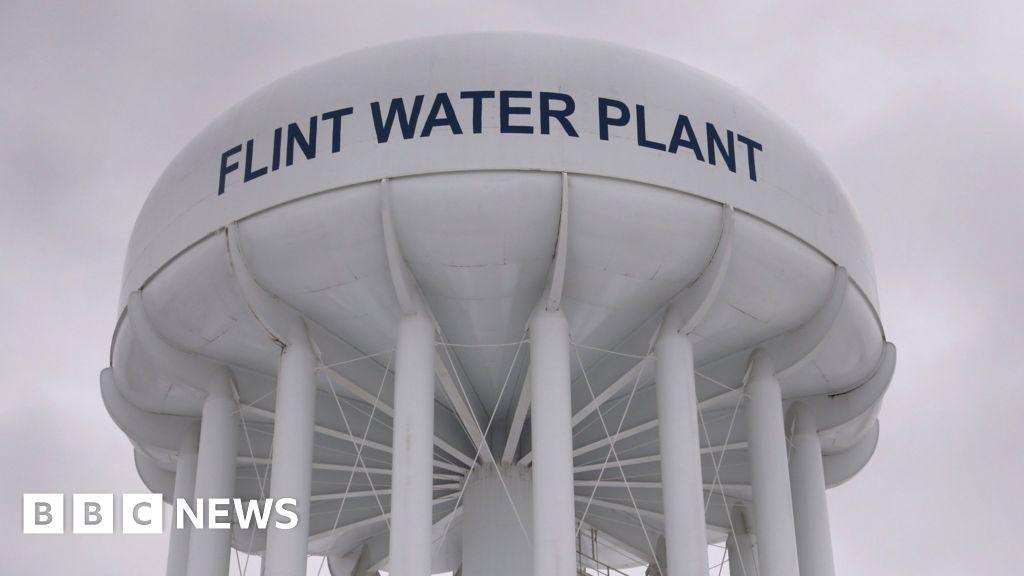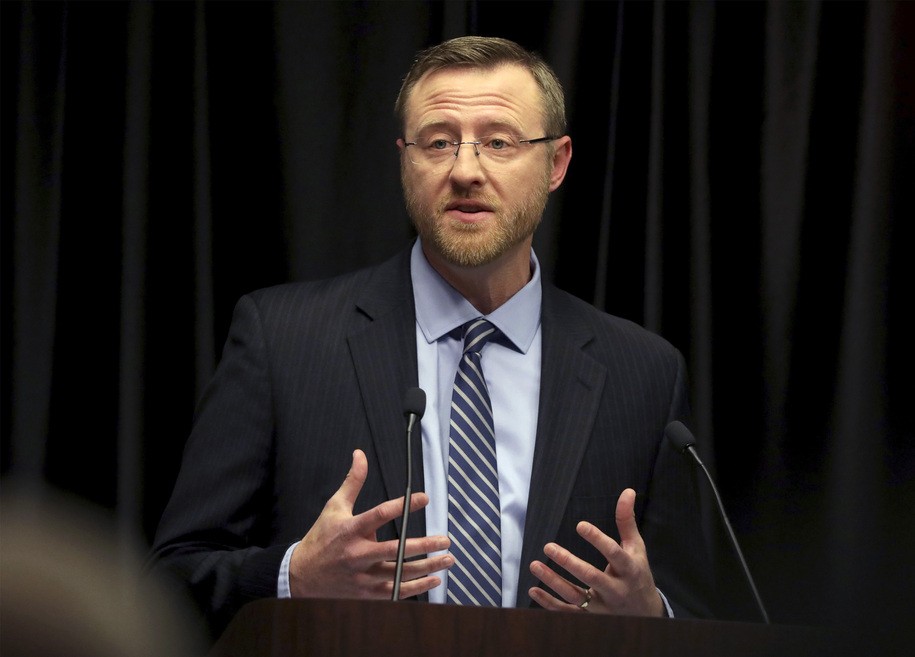As Kazakstan’s President Tokayev faces an unprecedented problem from common protest or “international terrorists” or inside coup (or a mix of all three) it’s price reflecting on the darkish heritage of this former Soviet state. That Tokayev’s inside ministry not too long ago confirmed that 9,900 individuals had been detained within the aftermath of the violence, refreshes the reminiscence of the times when Kazakstan was a key level within the Soviet Gulag Archipelago.
Solzhenitsyn used the phrase archipelago as a metaphor for political camps, which have been scattered like hellish islands extending from the “Bering Strait throughout the Bosporus.” The largest of those infamous amenities, the Kazak corrective labor camp at Karlag, Karanganda, was the delight of the Kremlin’s Gulag system. Established in 1930 it grew to become the house for hundreds of convict laborers and political dissidents and by the point of closure in 1959 had tortured over 1,000,000 prisoners. Karlag was among the many largest Gulag camps. Prisoners have been dropped at Karlag in shackles by practice, packed into boxcars like freight. Most had been charged as “enemies of the employees” beneath the arbitrary Article 58 of the Soviet Penal Code.
Managed from Moscow by the fearsome NKVD (secret police) prisoners who dedicated sure crimes have been positioned in particular punishment cells infamous for his or her use of utmost warmth and chilly. Notably intractable prisoners have been housed in water tanks, depriving them of sleep. At first spiritual leaders, writers, after which anybody accused of regime disloyalty was subjected to repression. NKVD additionally arrested the wives and kids of the “enemies of the individuals.” There was an enormous childhood morbidity at these camps between 1930–1940 creating what’s now gruesomely known as “the Mommy’s cemetry”. Many have been locked up for many years just for studying international textbooks. The dwelling situations of ladies didn’t differ from males. The ladies had just one benefit – they have been not often shot, however alas they have been incessantly subjected to sexual abuse. Identified Gulag prisoners included Lev Gumilyov (son of Anna Akhmatova and Nikolai Gumilyov); Rakhil Messerer-Plisetskaya (mom of well-known ballerina Maya Plisetskaya); Alexandr Yesenin (son of Russian poet Sergei Yesenin); in addition to the main Kazakh public figures like Ahmet Baitursynov and Gazymbek Birimzhanov,
Most likely Karlag’s most well-known inmate was the German author Margarete Buber-Neumann. Writer of Underneath Two Dictators (a memoir of Karlag) Margarete went on to outlive a Nazi focus camp. Her husband Heinz had been executed throughout Stalin’s Nice Purge. She survived 5 years in Nazi Ravensbruck. Dwelling in Sweden and later Germany, and inspired by her buddy Arthur Koestler, she wrote about her years in each Soviet jail and Nazi focus camps, together with her time in Kazakstan. Predictably it aroused the bitter hostility of the Soviet and German communists however ensured that the element of those torture camps was internationally understood. On 23 February 1949, Buber-Neumann testified in help of Victor Kravchenko, creator of the best-selling autobiography, Select Freedom, following his defection from the Soviet Union. Kravchenko was suing brokers of the French Communist Occasion for libel after it accused him of fabricating his account of Soviet labor camps. Buber-Neumann corroborated Kravchenko’s account, securing his victory.
Buber-Neumann continued to put in writing for the subsequent three a long time. The identical yr, she joined the anti-communist Congress for Cultural Freedom with Arthur Koestler and Bertrand Russell. Of Communism and Nazism, Buber-Neumann wrote: “Between the misdeeds of Hitler and people of Stalin there exists solely a quantitative distinction… I don’t know if the Communist concept, if its idea, already contained a primary fault or if solely the Soviet observe beneath Stalin betrayed the unique concept and established within the Soviet Union a type of Fascism…” She died aged 88 on November 6, 1989, in Germany, simply three days earlier than the autumn of the Berlin Wall.
Might 31 is the Day of Remembrance of the Victims of Political Repression in Kazakhstan, however it’s a low-key affair. Kazakstan has skilled a cautious political memorializing of the Soviet Gulags into nationwide historic websites. Two Gulag museums, Alzhir (the Akmolinsk Camp for Wives of Traitors to the Motherland), and Karlag (the previous Karaganda Corrective Labour Camp) opened in 2007 and 2011, respectively. Historic expertise of Soviet brutality is watered right down to create a extra acceptable historical past. The Gulag tragedies are ‘justified’ by the ideologies of the time, and selective in what they are saying. This displays a real if partial societal amnesia of the previous. Such handy lack of reminiscence is a response to the collective trauma skilled by the inhabitants of Kazakhstan throughout the Soviet period. It shouldn’t be forgotten that throughout the Kengir uprising in 1954, Karlag’s inmates pushed the Soviets out and held the complicated for forty days.
However, in Kazakhstan immediately, a major proportion of individuals have dwelling household whose life trajectories included deportation and imprisonment within the camps. A monument in Almaty, Kazakhstan commemorates an anti-Soviet protest in 1986, however the authorities, partly due to its pro-Russian international coverage, discourages remembrances of chosen historic occasions. There are political facets to a sidestepping of Kazakhstan’s current historical past, too, usually born out of the federal government’s dedication to remain pleasant with Russia. To maintain help for a pro-Russia foreign policy, Kazakhstan seemingly ignores its colonial and neo-colonial historical past with Russia. Though these efforts haven’t added as much as a ban on public remembrance, the federal government is wary- censoring through the schooling system and state media similar to KazakhFilm.
Guests to immediately’s Karlag Gulag Museum Complicated will discover a powerful fashionable constructing which doesn’t instantly embody darkish heritage. Inside there are 3 flooring of displays, convict artwork, propaganda posters and dioramas exhibiting what life was like throughout the gulag system. A basement homes a ugly collection of jail cells, torture rooms and execution tools, ignored by approving busts of Lenin. The museum was capable of finding jail information for January 1959, the yr it closed, that present 16,957 prisoners incarcerated throughout Karlag, a noticeable drop from the excessive of 65,673 recorded in January 1949.
The Karlag museum receives a rating of seven out of 10 on dark-tourism.com’s “darkometer” scale. By comparability, Auschwitz, and Hiroshima each rating 10. Displays embrace the horrors of the famine that ravaged Kazakhstan between 1919 and 1922 killing 500,000 individuals. The famine, together with the violent crushing of anti-Soviet rebellions, are described as “essentially the most horrible offenses in opposition to mankind” however no explanations are supplied.
The complicated includes a small however elegant museum, a memorial and a well-preserved Stolypin automobile, a primary railway carriage used for transporting prisoners. One of many first issues the customer sees upon getting into is a quote by the previous President of Kazakhstan, Nursultan Nazarbayev: “the Gulag camp system was against the law in opposition to humanity!” Nonetheless, this isn’t shouted too loudly, particularly at occasions when the President may require Moscow’s assist.
The museum suggests Karlag’s objective was to feed the jail system in Kazakhstan; in different phrases, it dealt in agriculture. Karlag was reorganized into the state farm Gigant and the camp, which held about 65,000 inmates at its peak, grew to become the biggest sovkhoz within the Soviet Union. Kazakhstan has accomplished one thing that might be unthinkable in Russia. The previous has been declared a nationwide tragedy and the entire nation has been become an enormous memorial, however Russia manages to flee blame, as if a long time of persecution had been dedicated by alien invaders.
Former President Nazarbayev, now 81, shrewdly embellished commemoration of the Gulag with an odd system of ritualized interpretations, which unified every ethnic group in reminiscence of the Gulag on the facet of the victims, whereas the blame is positioned on the faceless NKVD or “Stalinist system”. Fashionable Kazakhstan has a penchant for re-writing historical past, which implies the occasions of current weeks, alarm its leaders. Kazakhstan’s present president has stated troops from a Russian-led army bloc will quickly withdraw. Tokayev had requested for help from the Collective Safety Treaty Group (CSTO) to regain management, after unrest that left at the very least 164 individuals useless. Amidst fears of a everlasting Russian foothold in Kazakhstan, Tokayev insists the withdrawal would start quickly.
Tokayev executed a ruthless crackdown after protests over rising gas costs have been allegedly exploited by violent teams, who attacked authorities buildings and briefly seized the airport in Almaty. He has described these concerned as “terrorists” with shadowy international backers. Former President Nazarbayev has remained absent from public view for the reason that protests started, and Tokayev eliminated him from his place as head of the nationwide safety council, in addition to sacking his safety boss. The acute wealth accrued by the Nazarbayev dynasty has contributed to the temper of protest, and fueled fears of regime infighting. Russian troops on Kazak soil are disagreeable reminders of Kazakhstan’s dark heritage and produce unwelcome reminiscences of Solzhenitsyn’s “Gulag Archipelago” on this politically unstable a part of Central Asia.
Additional Studying on E-Worldwide Relations












